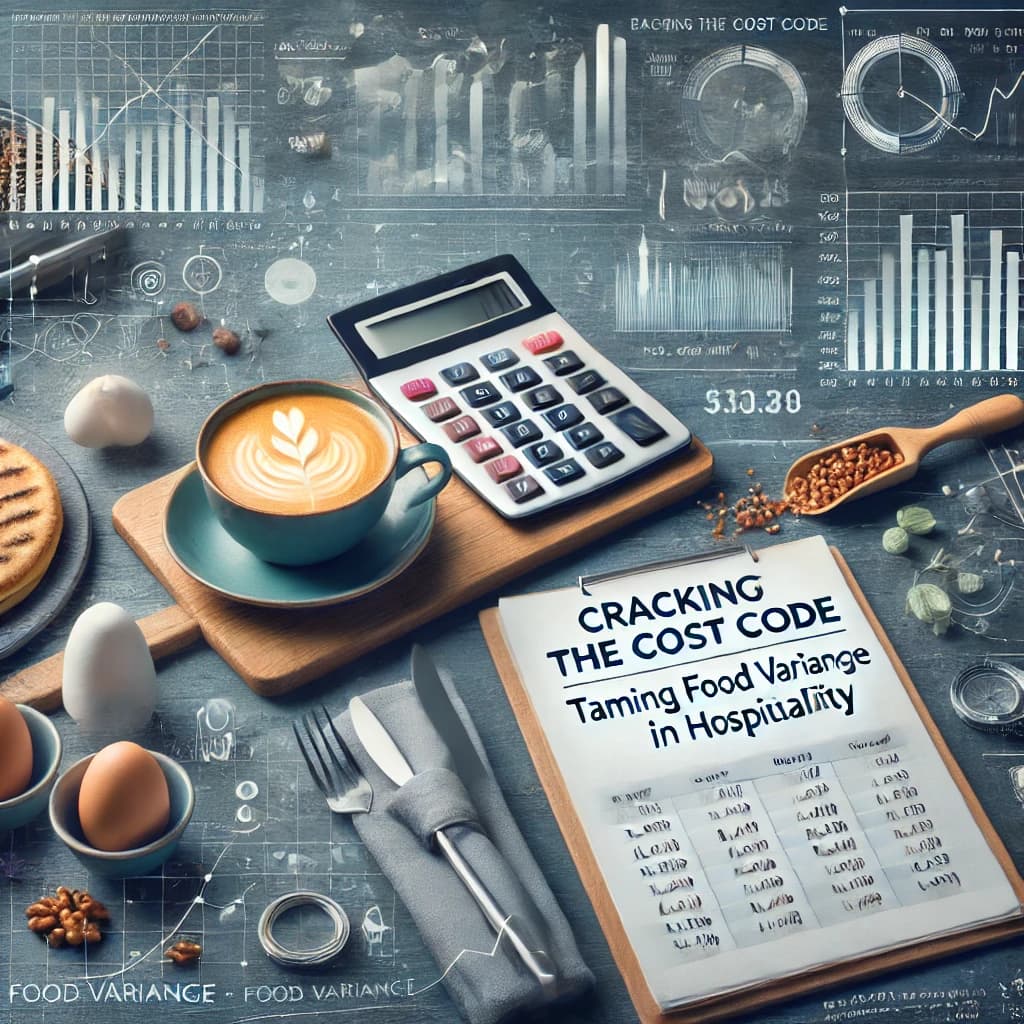Introduction
Few issues are more frustrating—and profit-draining—than discovering your theoretical food costs don’t match the actual ones. Maybe it’s a few extra ounces of steak here, or an unaccounted bottle of wine there. Over time, these small discrepancies balloon into major leaks in your bottom line. This post explores how to tackle food cost variance systematically so you can keep more of your hard-earned revenue.
1. Waste Not, Want Not
- Track and Analyze Waste: Maintain a waste log—digital or physical—that details what was discarded and why. Over time, this reveals patterns like over-prepping certain ingredients.
- Repurposing Leftovers: Day-old bread can become croutons or bread pudding. Vegetable trimmings can be used for stock. Creative solutions save money and minimize waste.
2. Portion Control: Precision Is Power
- Standardized Recipes: From the sauce ratio to the protein portion, everything should have a defined measure. Staff must follow these guidelines consistently.
- Scales and Measuring Tools: Invest in high-quality kitchen scales, scoopers, and portioning spoons.
- Regular Staff Training: Emphasize the importance of accurate portioning. Offer refresher courses whenever you update menus.
3. Strengthening Delivery Reception
- Check All Invoices: Confirm the quantity and quality of delivered items match what you ordered. If you ordered prime steak, ensure you didn’t get a lower-grade cut.
- Batching Receipts: Some restaurants implement a QR code scanning system that automatically reconciles deliveries with digital purchase orders, reducing human error.
4. Addressing Theft and Shrinkage
- Security Measures: Consider using security cameras in storage and prep areas to discourage unauthorized access.
- Transparent Culture: Sometimes employees take food home due to misunderstandings or financial stress. Offer a discounted “staff pantry” to reduce temptation.
- Random Audits: Periodic inventory checks keep everyone honest and highlight discrepancies early.
5. Nailing Down Accurate Recipes
- Recalculate Regularly: Ingredient prices fluctuate, so update recipe costs at least monthly.
- Conduct Trial Runs: Test each dish in a controlled environment to confirm the portion sizes and yields align with theoretical recipes.
- Iterate for Efficiency: If a dish consistently runs over cost, consider adjusting its portion size or ingredient composition.
6. Tech Tools to the Rescue
- Inventory Management Software: Automated reorder alerts, real-time stock updates, and recipe costing help keep discrepancies in check.
- POS Integration: A well-integrated system can match every rung-up dish to the corresponding inventory draw.
- Forecasting Algorithms: AI-based solutions factor in historical sales, local events, and seasonality to refine your buying strategy.
7. Quick Wins
- Regular Stock Rotation: First in, first out (FIFO) policies prevent spoilage.
- Menu Simplification: Fewer items means simpler inventory tracking and lower odds of cost variance.
- Daily Spot Checks: A quick morning inventory of key, high-value items (like steak or salmon) can nip variances in the bud.
Conclusion
Food cost variance might be an industry-wide headache, but it’s far from incurable. By investing in robust processes—from portion control to invoice auditing—and leveraging technology where possible, you can create a leaner, more profitable operation. Remember: every ounce counts, and when you tighten your controls, you free up revenue for staff bonuses, better ingredients, or expansion opportunities.
